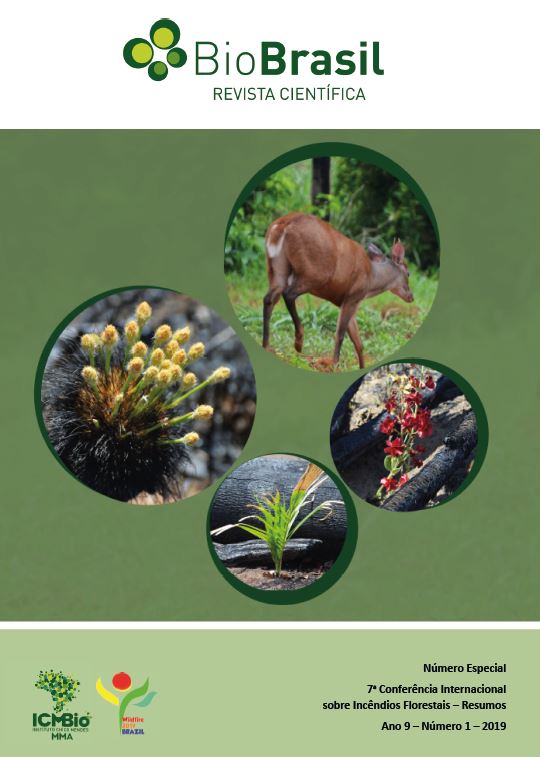Open Ended Fire Breaks - New Technology for Creating Extensive Fire Breaks in Challenging Landscapes
DOI:
https://doi.org/10.37002/biodiversidadebrasileira.v9i1.1248Palabras clave:
Africa, firebreaks, extensive, ecologically sensitiveResumen
Annually wildfires devastate many thousands of hectares on a global scale. Where there are alternating wet and dry season climatic conditions combined either with natural e.g. lightning, or anthropogenic ignition sources, devastating wildfires are destined to occur. This is as a result of the accumulation of herbaceous fuel during the wet season that desiccates during the dry season becoming highly flammable. Wildfires cause the tragic mortality of both humans and animals. Domestic livestock, wild animals and infrastructure are threatened resulting in extensive losses of possessions and grazing causing great hardship during the dry season, particularly for rural communities. Judicious and timely prescribed burning can minimize wildfire threats but constructing extensive fire breaks are very labour demanding, costly and often ecologically damaging. Creating ecologically sensitive, extensive fire breaks in inaccessible terrain or in wilderness areas is a challenging and often impossible task. The technical expertise and methodology for developing an effective, economical and safe method of creating fire breaks along boundaries or over extensive distances using minimum inputs was sorely required. The Research and Development Division of Working on Fire International investigated further recent developments in Australia using aerial ignition of fires. Best Operating Procedures, pertinent to Southern African conditions, have been developed for using aerial ignition to create practical, cost effective and ecologically acceptable fire breaks spanning vast distances in all types of terrain. These Open-Ended Fire Breaks (OEFB's) are effective in controlling the spread of damaging wildfires in isolated and/or inaccessible areas or those emanating from across international boundaries. Open-Ended Fire Breaks are also considered more aesthetically in keeping with natural landscapes in conservation areas. The development of such cost-effective fire breaks will be of great value to the management of extensive and/or mountainous areas and will provide protection for rural communities living in remote areas
Descargas
Citas
AUSTIN, C de B., TROLLOPE, W.S.W., TROLLOPE, L.A., STEYN, M., VENTER, F., ZAMBATIS, N., SOWRY, R. & CONNOLLY, R., 2011. Development of Open Ended Fire Breaks in the Kruger National Park, South Africa
Co-ordinating the research component of developing an Open Ended Fire Break along the eastern boundary of the Kruger National Park to combat wildfires originating from Mozambique
Successfully developed the Best Operating Procedure (BOP) for the Development of Open Ended Fire Breaks (OEFB) using aerial ignitions with a helicopter and ground crews on the western boundary of the Kruger National Park in South Africa
Descargas
Publicado
Número
Sección
Licencia
Derechos de autor 2021 Biodiversidade Brasileira - BioBrasil

Esta obra está bajo una licencia internacional Creative Commons Atribución-NoComercial-SinDerivadas 4.0.
Os artigos estão licenciados sob uma licença Creative Commons Atribuição-NãoComercial-SemDerivações 4.0 Internacional (CC BY-NC-ND 4.0). O acesso é livre e gratuito para download e leitura, ou seja, é permitido copiar e redistribuir o material em qualquer mídia ou formato.











